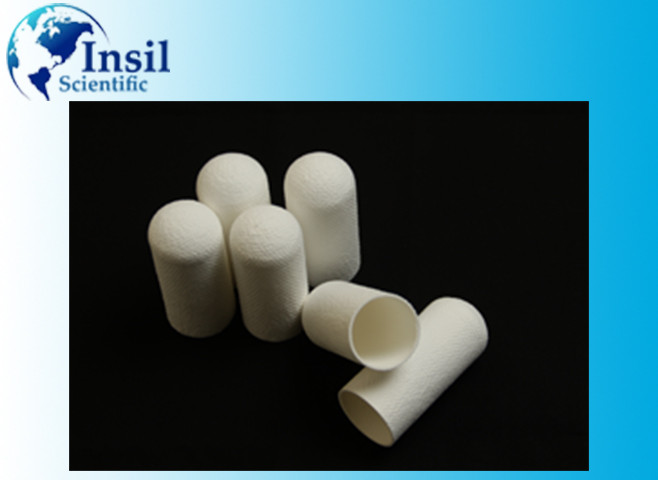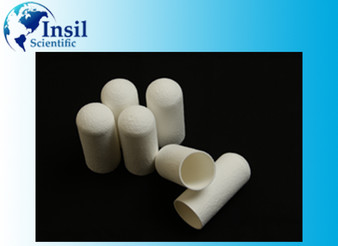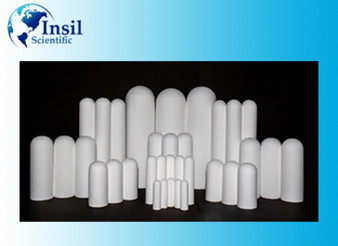HOME | DD
 blsahoo — Demystifying Cellulose Extraction Thimbles: A Comp
blsahoo — Demystifying Cellulose Extraction Thimbles: A Comp

Published: 2023-10-31 05:25:18 +0000 UTC; Views: 139; Favourites: 0; Downloads: 0
Redirect to original
Description
In the world of analytical chemistry, precision and accuracy are paramount. Researchers and scientists strive to extract and analyze target compounds from various samples with the utmost precision. One essential tool in this pursuit is the cellulose extraction thimble, a seemingly simple device that plays a crucial role in diverse applications, from environmental monitoring to pharmaceutical research. In this comprehensive guide, we delve into the world of cellulose extraction thimbles, demystifying their usage, benefits, and the science behind their effectiveness.
Understanding Cellulose Extraction Thimbles
A cellulose extraction thimble is a small, cylindrical, and typically porous device made from high-quality cellulose fibers. These fibers are sourced from plant materials like cotton, which contain natural cellulose. The thimbles come in various sizes to accommodate different sample volumes, and they are widely used in extraction processes that involve solid-liquid separations.
The Extraction Process
The extraction process is a cornerstone of analytical chemistry, allowing researchers to isolate specific compounds from complex matrices. In this context, cellulose extraction thimbles serve as the vessel that holds the sample during the extraction process. The sample, often a solid material, is placed inside the thimble, which is then inserted into the extraction apparatus. Solvents or other extraction mediums are passed through the sample, dissolving the target compounds. The thimble's porous nature allows the solvent to flow through, facilitating the extraction while keeping the solid sample contained.
Applications Across Industries
Cellulose extraction thimbles find applications in a wide range of industries and scientific fields. Some of the prominent areas where these thimbles are employed include:
1. Environmental Analysis
In environmental monitoring, cellulose extraction thimbles are used to analyze soil, water, and air samples. Researchers can extract pollutants, heavy metals, and organic compounds from these matrices, aiding in pollution control and resource management.
2. Pharmaceutical Research
Pharmaceutical scientists utilize cellulose extraction thimbles to extract active pharmaceutical ingredients from plant materials, facilitating drug discovery and development. These thimbles ensure the purity and concentration of extracted compounds, which is vital for accurate testing.
3. Food and Beverage Industry
Quality control in the food and beverage industry relies on precise extraction and analysis. Cellulose extraction thimbles help in testing for contaminants, flavors, and nutritional components, ensuring consumer safety and product consistency.
4. Research and Development
In various research settings, cellulose extraction thimbles are used to isolate and study compounds of interest. This can include natural product extraction, material analysis, and fundamental chemical research.
Benefits of Cellulose Extraction Thimbles
The popularity of cellulose extraction thimbles stems from several key benefits they offer:
1. Consistency
Cellulose thimbles are manufactured with high precision, ensuring uniform porosity and thickness. This consistency minimizes variability in extraction results, contributing to reliable data.
2. Chemical Compatibility
Cellulose is chemically inert and compatible with a wide range of solvents and reagents. This versatility allows researchers to choose the optimal extraction medium for their specific compounds.
3. Minimal Contamination
The inherent purity of cellulose minimizes the risk of cross-contamination between samples. This is particularly important when analyzing trace amounts of target compounds.
4. Ease of Handling
Cellulose extraction thimbles are lightweight, easy to handle, and can be disposed of after use. This reduces the risk of carryover between experiments and simplifies the workflow.
Maintenance and Care
Proper care of cellulose extraction thimbles is crucial to maintaining their performance. Thimbles should be stored in a cool and dry environment to prevent degradation. After use, they can be cleaned or disposed of depending on the nature of the extracted compounds.
In Conclusion
As we've explored in this comprehensive guide, these thimbles enable accurate and efficient extraction of target compounds from a variety of samples across diverse industries. Their consistent performance, chemical compatibility, and ease of use make them a vital tool for researchers striving to uncover the mysteries of the substances that surround us. Whether in environmental protection, pharmaceutical advancements, or culinary delights, cellulose extraction thimbles continue to play a pivotal role in advancing scientific understanding and innovation.
About Us
Insil Scientific is lead by a team of dedicated professionals whose educational background is pure science. Our ambition has always been to provide high quality Cellulose and glass micro fibre products at the most reasonable rates.

















